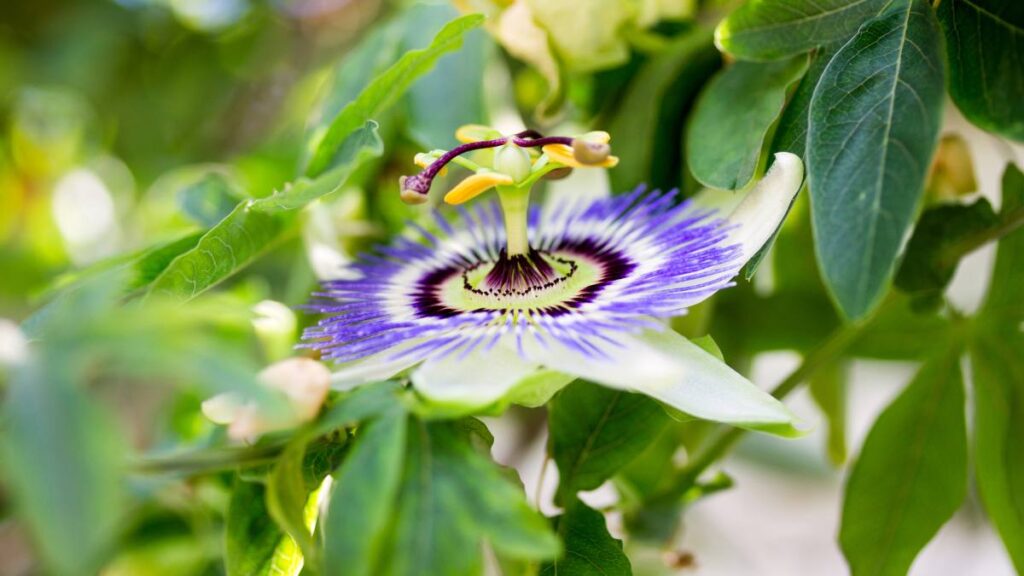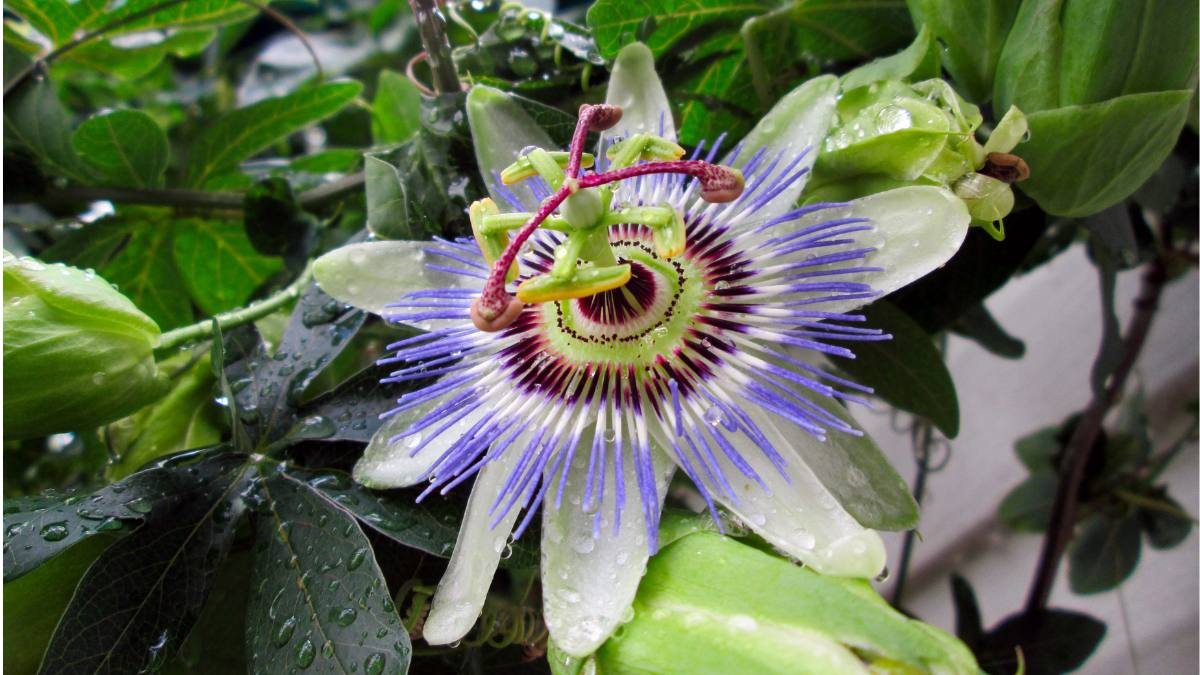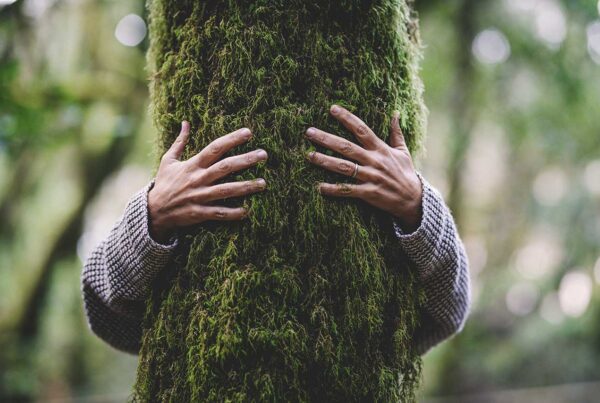One of the most profound books I’ve ever read is Stephen Harrod Buhner’s epic Plant Intelligence And The Imaginal Realm.
In this post, I want to share some of my notes and insights from reading this ecological awareness masterpiece that is the most interesting manual I’ve found for developing what he calls “the feeling sense” outdoors.
The feeling sense is your capacity to immerse yourself in heartfelt presence and connect to the natural world through a sensory language of “felt presence” that’s much older and more powerful than words.
Like most great herbalists, Buhner was a passionate autodidact who learned much of what he knew directly feeling and perceiving it from nature.
This is a kind of natural intelligence that the modern reductionist Western world distrusts, but I believe it’s the only way out of the current path toward civilizational collapse and the extinction of modern humans.
Plant Intelligence And The Imaginal Realm is the fourth book in Stephen Harrod Buener’s lifework. The previous books were Sacred Plant Medicine, The Lost Language of Plants, and The Secret Thoughts of Plants, which I also highly recommend reading.
His work explores natural intelligence and the communication networks among plants and ecosystems, direct heart perception, synchronization of heart fields and navigating EM (electromagnetic) field dynamics.
Unpacking Plant Intelligence And The Imaginal Realm

He starts the book with most of my favourites quotes from Roald Dahl and an introduction to the book as a user’s manual for developing the feeling sense:
“Watch with glittering eyes the whole world around you, because the greatest secrets are always hidden in the most unlikely places. Those who don’t believe in magic will never find it. – Roald Dahl
“This book is a user’s manual about the techniques and states of perception necessary for directly interacting with the Gaian system, perceiving the deeper patterns in Gaian movements, and understanding the meanings within those patterns. In many respects it is a manual for becoming a nondomesticated explorer of the natural world, something that used to be a called, long ago, a natural philosopher, what might now be called a wild scientist as opposed to a domesticated one.
Unlike the majority of books being written about the state of Earth/human relationship and the problems that face us, this book does not list all the troubles and then, at the end, call for more regulation, urge you to write your congressional representative, insist that you recycle or buy an (absurdly expensive) environmentally friendly car, or plead for you to give money to nonprofits. As Einstein so eloquently put, We can solve problems by using the same kind of thinking we used when created them. So, this book is about how to actually think differently, the processes involved, and how they will alter your perceptual frame if you use them. It then urges you to do one thing: whatever the hell it is that you think you should do in response. It its in your own individual genius that the answers lie, not in the prouncements of experts who have no conception of the local environment in which you live every day of your life. Letting the experts run things is how we got into this mess to begin with.
Thus, this book is specifically meant for those who understand what it means to look with glittering (i.e., luminous) eyes. For that is the understanding that binds us together, that lies at the heart of thinking differently.”
In this first chapter of the book “Reclaiming The Invisible”, he describes the fundamental disconnection and deadness of the modern world:
“We can no longer see or feel what is within the surface sensory inputs that we receive; we can longer experience the luminous with which we are surrounded. We have lost, as James Hillman once put it, the response of the heart to what is presented to the senses. The early-twentieth-century German writer and poet Gottfried Benn captured this state of being, our almost fanatical orientation toward surfaces, in his observation that, “[for those in the West] reality is simply raw material, but its metaphysical background remains forever obscured.”
He quotes the great scientist and psychedelic visionary Albert Hofmann on what the loss of the metaphysical background, our loss of the sense of aesthetic unity, has on us as human beings:
“The experience of such a comprehensive reality is impeded in an environment rendered dead by human’s hands, such as is present in our great cities and industrial districts. Here the contrast between self and outer world becomes especially evident. Sensations of alienation, of loneliness, and of menace arise. It is these sensations that impress themselves on everyday consciousness in Western industrial society; they also take the upper hand everywhere that technological civilization extends itself, and they largely determine the production of modern art and literature.”
Who notes that everything is so tightly controlled now, that it is schooled so that you don’t “extend awareness further than your culture wants it to go.”
“Art — real art —connects artists, and their art, and those who experience their art, to the metaphysical background of the world, to the imaginal world that lies deep within the physical. That is, in part, its ecological function. And that is why the continuing assaults on the imaginal (and its explorers) are so pervasive, why the schooling of artists — of writers, musicians, painters, sculptors — has become so mechanical, so oriented toward surfaces, toward form. For it we should recapture the response of the heart to what is presented to the senses, go below the surface of sensory imputs to what is held inside them, touch again the “metaphysical background” that express them, we would begin to experience, once more, the world as it really is: alive, aware, interactive, communicative, filled with soul, and very, very intelligence — and we, only one tiny part of that vast scenario. And that would endanger the foundations upon which Western culture, our technology—and all reductioinist science—is based; for as James Hillman so eloquently put it, “It was only when science convinced us that nature was dead that it could begin its autopsy in earnest.” A living, aware, and soul-filled world does not response well to autopsy.”
Nevertheless, despite our cultural immersion in surfaces, our “growing up”, and our schooling, somewhere inside each of us, those memories reside. Someplace deep inside, we remain children, those younger parts of ourselvs woven into our being just as the rings of tree — and their earlier stages of growth — are still within them. These parts remain accessible within us, natural expressions of our aliveness. All of us have the capacity to free those parts–and their unique perceptual experiences of the world. All of us still have the capacity for a deeper kind of perception”
Using this different kind of perception and thinking is the way of our predicament. It is an evolutionary necessity.
Sensory Gating Channels And The Feeling Sense

“There are things known and things unknown, and in between are the doors of perception.” – Aldous Huxley
“Sensory gating channels can be thought of as tiny apertures or gates or doors in specific sections of the nervous system’s neural network. They are similar to the lens in our eyes that can expand or contract as needed to increase or decrease the amount of data allowed in. They act to prevent sensory overload. In other words, if we consciously perceived everything that was coming in simultaneously as it was happening we would be overwhelmed with sensory experience.”
“The opening of sensory gating channels beyond the current setting paramets dictated by our culture is a necessity. To think differently, we must actually think differently. And in this, intent is impotortant.
What you intend when you approach something in the world determines, to varying extents, the degree of sensory gating that occurs as you perceive that phenomenon. Intent, task demands, cognitive template, and gating defaults all affect what you sensorally perceive when a part of the exterior world and you meet. More colloquially, all of us see what we expect to see.”
“The dream state is important. It’s very similar to the state that Gaia (and plants) are in most of the time.”
“The West has immersed itself in the technique– in the mechanics of things — in nearly every area of art and learning and lost something very precious in the process. Our lives are now surrounded by that mechanicalism. Our houses, our clothes, our art, and our science all reflect it– more so each year… and the need for Prozac increases right along with it./ People just don’t feel well any more.”
“The expanding perception of the metaphysical background of the world does in fact, lead to considerable innovations as habituated patterns are broken. People learn to see and hear and sense and think in new ways.
“Reclaiming the feeling sense, and developing it as a primary sensing tool, is one of the main ways to begin to enter more deeply into the metaphysical background of the world. Although it seems onerous, the key to its reclaimation, as it is with all art forms, is a lot of practice.
So, let’s play with it a bit so you can get a sense of what I mean…
Let your eyes wander around the room you’re in until something catches your attention–desk, pen, cup; it doesn’t matter what it is. It is just, for whatever reason at this moment in time, interesting to you. It appeals in some way.
Now. Look at it carefully, note its shape, notice its color. Really look at it; let your visual sensing take it in. Let your eyes touch the thing as if they were fingers capable of extreme sensitivity of touch. Immerse yourself in seeing the thing that has caught your attention. Now, ask yourself, How does it feel?
In the tiny moment of time that follows that question, there will be a burst of feeling, an “intimation of mood or feel” as Goethe once described it. Your nonphysical touching has just felt a part of the exterior world. There’s a specific and unique feeling experience that occurs whenever this question is asked about something that is acutely observed. What stands revealed is a dimension to things beyond height, width, and breadth. There is a feeling dimension to them. The secret kinesis of things.
Now, let your eyes be captured by something else, again focus on how it looks, its shape and colors, and when you are really noticing it, ask yourself, How does it feel? There will be again, that immediate emergence of an “intimation of mood or feeling.” That thing has a feeling tone to it. Even if you might not be able to say exactly what that feeling is, it’s very distinct, isn’t it? And this particular feeling tone will be unique to the thing itself. It’s different from the one possessed by the last thing you felt. In fact, everything you touch in this way will have a slightly, or sometimes very, different feeling or kinesis to it.
Now, do it again with something else. Only this time after you ask How does it feel? just after the unique feeling tone emerges, savor it for a while as if you are smelling a unique but delicate perfume or tasting a unique and subtle flavor. Immerse yourself in what you are now feeling.
“Now… shift your attention to yourself. Notice how you are feeling.
Interesting, isn’t it? The state you are now in is different from how you were before this exercise began.
If you really have immersed yourself in this exercise, you will find that your physiology has shifted. Your breathing will have slowed and deepened, your body become more relaxed. Eye focus will be different, too, more soft-focused; peripheral vision has been activated.
Colors will be likely be a bit more luminous, sound more resonant, body sensations more sensative.
Everything around you will feel more alive. State of mind has shifted as well. Your thoughts will be slower and deeper. Perceptual focus is enhanced. You will feel a bit dreamier.
Now , do it again–look at something, observe it in detail, and then ask yourself, How does it feel? At the emergence of the feeling tone, again savior it for awhile, then pay attention to your state. Pay attention to how you feel. Now compare that feeling to the feeling you had just a moment ago, when you last focused on yourself. There’s a similarity, isn’t there? There is a particular feeling that accompanies this kind of perception.
The particular feeling you have in your body when you do this can be remembered, if you wish, and recreated anytime. You begin to get a sense of the state you are going for. Habituating yourself to this feeling, deeply anchoring it in your experience, gaining familiarity with it, will allow you to drop down into it over and over again. At will/
This state, as everyone who trains in it learns over time, can be deepened considerably, It must be if you wish to fully enter the metaphysical background of the world. This first step, you might say, is where you get your foot in the door of it. You can, if you wish, extend it a bit further now…
Do the exercise again and while you’re in that state, slowly take your eyes off the thing you are looking at and slowly look around at everything else you can see. (Keep breathing from this more relaxed state, let your eyes remain soft focused.) Let your eyes slowly pan the room and allow that feeling part of you to feel everything in the room as a wash of feeling flowing into you from what you are seeing. Instead of feeling the secret kinesis of one thing, you are feeling the secret kinesis of many things at once. At this moment you are feeling the world around you )with the part of you that can nonphysically touch) as a continual act similarly to the way you see or hear the world around you as a continual act.
“Continually sensing in this way is the key to opening the doors of perception more widely at will, the key to entering deep within the metaphysical background of the world. When this form of perception is initiated, the conscious mind begins to move into the background, the statistical mentality begins to be left behind, mechanicalism begins to be abandoned. By focusing intensely through the senses and then asking How does it feel? you move out of analytical thinking, out of the brain, and begin to move into a different kind of cognition, one that is intimately interwoven with feeling.
So, there are three initial, essential steps to this. This first is seeing–really looking at–what is right in front of you, the second is asking How does it feel? The third? It’s something rather tedious I’m afraid… practice, practice, and, still, more practice. In other words, everywhere you go, every place you visit, everything you encounter, ask yourself, How does it feel?
“As the skill is habituated– as you continually perceive the world through your feeling sensing– the novelty level of everything increases. This, over time, opens gating channels more widely as a general condition. All sensory imputs begin to take on the same kind of luminosity… You begin to engage the world, as a habit, with more open gating. As more time passes, gating continues to expand, you begin to enter more and more deeply into the metaphysical background of the world.”
More to come but this is the foundation practice for developing your feeling sense.
- 10 Sustainable Travel Trends Driving The Future of Tourism - March 9, 2025
- 10 Tips To Sell Out Your Transformational Retreats In 2025 - February 20, 2025
- Build 10 Habits That Free Up Your Time With Mindful Coaching - February 11, 2025





